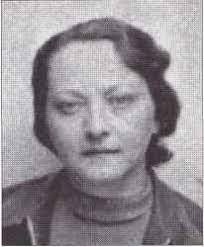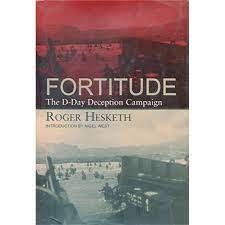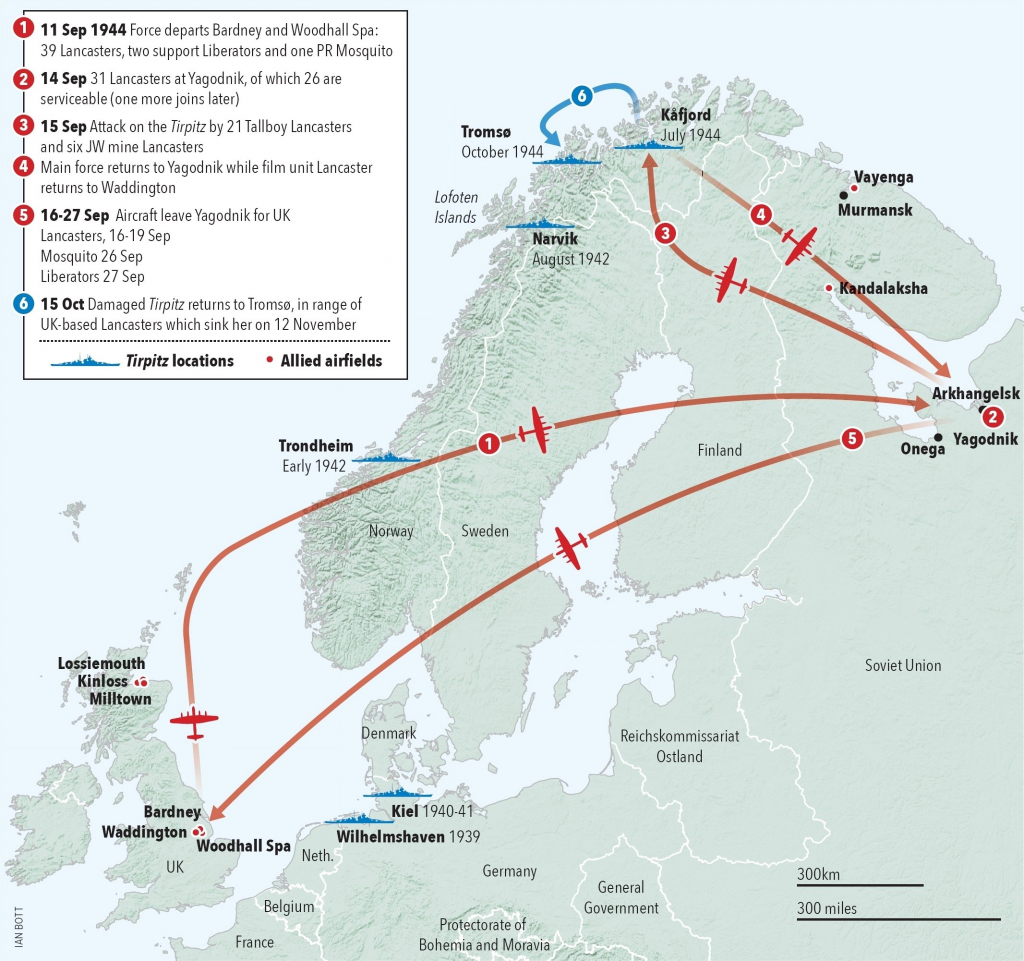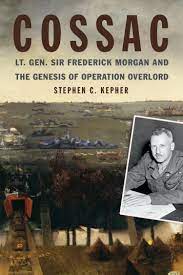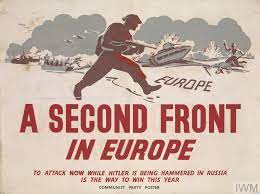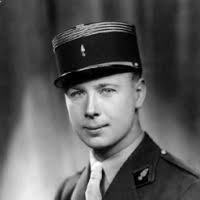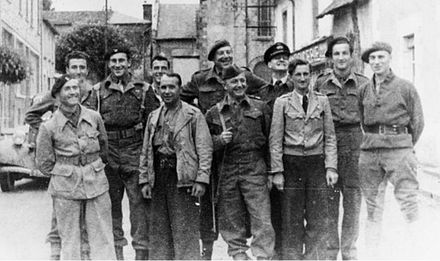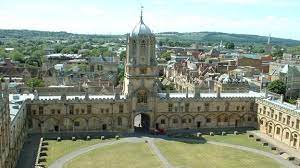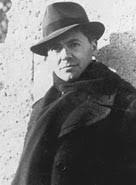
Seasonal Greetings to all coldspur readers! Thank you for all your comments, hints, corrections, praise, criticisms, messages of support, and challenges throughout 2022! Stay in touch.
The SOE On-Line Forum
‘The Airmen Who Died Twice’
Gibson & Gubbins: Further Myths?
Geoffrey Elliott: An Obituary
Coldspur and the archive
Notes and Queries
Dr Austin and ‘Agent Sonya’s Wireless’
John le Carré: Letters & TSWCIFTC
The National Archives
Documents No Longer Talk
Hilary Mantel, Fiction and History
Envoi: Philip Larkin’s Nightwear & Homo Sapiens and Us
********************************************************************
The SOE On-Line Forum
The Special Operations Executive appears to have settled into a sedate maturity. Now over eighty years old, its authorized histories have been written (partially); the plaques and memorials of its most brave and intrepid agents have been set up: several biographies – all very flattering – of its most celebrated leader, Colin Gubbins, have been written; the ceremonies of remembrance take place with appropriate dignity and respect; the obituaries of its members are diminishing in number; occasional items on the radio and in the press about the exploits of SOE include a mix of romantic embellishment with more solid facts. Overall, its reputation is good: new histories of the war regularly emphasize the contribution it made to the conclusion of the hostilities, frequently citing the somewhat overstated opinion of General Eisenhower. No academic historian appears to want to rock the boat and present a re-assessment of the practices and achievements of the organization.
I am rather uncomfortable about this state of affairs. I have performed enough research this year, on the incidents involving PROSPER and the Cockade deception scheme, and in a detailed analysis of the contribution of Colonel Gubbins, to convince myself that the current story is inadequate and misleading. Part of this conclusion emanates from the fact that the authorized histories of SOE are so defective. The only substantial volume covers France, but the original 1960s edition was severely censored, and, when the author, M. R. D. Foot, came to revise it in 2004, he neglected to analyze subsequent research, and failed to reconcile conflicts in his story. Meanwhile, the air has been cluttered with a host of memoirs and biographies that casually mix archival records with highly dubious assertions about events.
Thus, earlier this year, I was energized to discover an SOE forum/chat-group on the Web, and joined it. I thought that a colloquium of serious students of SOE would lead to a more profound assessment of all the new evidence about the strategies of SOE, and its relationship with the Chiefs of Staff, with MI6, and with the London Controlling Station. The members of the group whose postings I have read are almost exclusively dedicated and estimable persons who are sincere about establishing the facts about a number of SOE actions and projects. They include some distinguished authors of books on military history and intelligence. They share their findings, and encourage others (many of whom are performing family-based research) in their aspirations, and guide them in their inquiries. They are led by a member of the Special Forces Club, which was created to perpetuate the heroics of members of SOE.
Yet I rapidly became disenchanted. The group is very absorbed with (and efficient at) resolving questions such as: At which country house did the Poles get their training? What airport was used for launching Operation X? What medals were awarded to the members of Mission Y? Exactly what firearms did they carry? What was the background of Agent Z? Whenever a matter of more controversial substance arises, however, I have noticed that a sepulchral silence takes over. I have been prompted a few times, by the raising of a topic close to my research on SOE (such as my coverage of PROSPER, or the career of Colin Gubbins, or the troublesome history of the Russian Section), gently to draw attention to my researches on coldspur by providing a link. While I have received some private messages of encouragement arising from such introductions, the only public statements from the forum have almost exclusively been intemperate and dismissive lectures from one of the senior members.
It seems to me that the group is somewhat in awe of Francis Suttill, and he has a cabal of supporters who rally round him. Now, I happen to think that Mr. Suttill deserves a lot of sympathy and respect: sympathy, because his father was cruelly murdered by the Nazis in March 1945, and respect, because he has performed some painstaking (but flawed) research into the exploits of F Section of SOE in WWII. But that does not entitle him to maintain a closed mind on the tribulations of 1943, which standpoint he has unmistakably adopted. He is in the thrall of M. R. D. Foot, the late historian of SOE, and of Mark Seaman, the successor to the advisors from the Foreign Office, and it appears to me that he is not really willing to engage in calm and constructive debate about the surviving anomalies of SOE’s French adventures in 1942 and 1943.
When in early November I drew attention to my research on coldspur, and my theory that Francis Suttill Sr. probably made two journeys back to the UK in May and June 1943, Suttill Jr. responded on the SOE forum with an ill-mannered attack on my scholarship. I ignored it, as previous direct exchanges with him had proved fruitless, and he had abandoned me mid-stream in April after we had started an email dialogue about the events of summer 1943. And then, a few days later, a person identified as ‘Emma’ submitted his complete tirade to me on coldspur, and I decided to approve the whole message, while pointing out that neither she nor Mr Suttill had apparently read what I had written. I said I would welcome any serious response, and would be delighted to engage in debate. Emma then replied, expressing her surprise at what I had written, while erroneously suggesting there was evidence that Suttill had never made a second visit to the UK (an almost impossible task to prove, incidentally).
All those postings can be seen at https://coldspur.com/feints-and-deception-two-more-months-in-1943/, following the text of the article. At this stage I decide that Emma needed to come out into the open, and I accordingly sent an email message to the address supplied with her WordPress posting, where I explained that she needed to divulge to me (confidentially) details about her real name, her residence, and her qualifications and connections before we moved forward. I then discovered that the email address she gave me was a non-existent one, and I alerted her (via coldspur) that she was henceforward disqualified from posting any comments on my site until she came clean with her name and affiliations. (The original email, and the subsequent posting, can also be inspected on coldspur.)
That was not the last I heard from ‘Emma’: a few days later she explained that she had mis-spelled her email address, and did not want to divulge her full name. That was enough for me: my policy is not to allow anyone to enter serious debate (as opposed to offering incidental comments) on coldspur who is unwilling to confide to me his or her name and qualifications. ‘Emma’ may not have been a woman; she may have been one of Suttill’s acolytes put up to goad me. I have no idea. In fact, since she has not offered one single argument of any merit, but simply shown herself as a shill for Suttill, it doesn’t really matter. But the whole farrago seems to be exceedingly sad: that a group established to investigate SOE (and promote the memory of its gallant agents, of course) should so smoothly slide into such incurious and obstinate behaviour, and that one of its members should so naively dissemble in an effort to discredit my own careful and professional researches, reflect poorly on the state of serious historical inquiry.
And then, out of the blue, at the end of November, I received a conciliatory email from Mr. Suttill, apologizing for taking so long to respond to my questions from last April. I thanked him for his insights, promised to follow his advice and delve carefully into the records, and on December 11 sent him a long and careful email listing a number of questions I had concerning his conclusions. A week later, I received a detailed reply, for which I was very grateful. It communicated a very useful message, although the text confirmed to me that Mr. Suttill really has no methodology behind his researches. Shortly after Christmas I consequently sent a long screed to Mr Suttill, in which I explained my methodological approach, and outlined in detail the flaws that I believe exist in his account of the events. I shall report on the outcome next month.
The Airmen Who Died Twice

Several correspondents have asked me where this project stands. I presented a teaser article back in early June of this year, where I described the crash of a Lancaster aircraft in Norway in September 1944, on a return from a bombing raid on the Tirpitz using a temporary airbase in Yagodnik, in northern Russia. I suggested that the records of the anomalous casualties had been covered up, as two of the fatalities initially reported survived only to be killed by the Germans on the Swiss border a month later, and I committed that a full explanation would be forthcoming.
It has proved to be a fascinating exercise. Nigel Austin (with whom I am collaborating) and I have now completed seven chapters of ten, and plan to complete the project by early 2023. What will happen with our story is uncertain: we hope to find a reputable outlet that will issue the story, although its length may be challenging. As a back-up, we have coldspur, and, if we decide to use that medium, shall probably release a chapter a week in order to make it a more manageable serial.
The ramifications of the accident have been wide-ranging. Our researches have taken us into such fields as: the strange, late decisions that were made on the logistics of the Tirpitz raid; Stalin’s SMERSH organization, and its relationship with the NKVD; the Warsaw Uprising; the use of bases in Poltava by the USAAF; SOE’s relationships with Norway’s resistance organization, MILORG; Communist factionalism in Norway; the Soviet Union’s plans for regaining territory in Finland and acquiring some in northern Norway; Stalin’s desire to acquire Allied technology clandestinely; the controversies surrounding the British Military Mission in Moscow; disagreements over policy between the War Office and the Foreign Office; and SOE’s relationship with the NKVD representative in London, Colonel Chichaev. The investigation is thus multi-faceted, and the conclusions are shocking. Watch this space for more information.
One of the most fascinating parts of the project has been studying the records of the communications between the Foreign Office, the Chiefs of Staff, the Air Ministry, the Joint Intelligence Committee, the Embassy in Moscow, and the 30 Military Mission (which was strictly independent of the Embassy and its own attachés representing the armed forces). A continual battle took place in 1943 and 1944 between the appeasers of the Foreign Office (rather surprisingly supported by Cavendish-Bentinck, Chairman of the Joint Intelligence Committee) and the Chiefs of Staff, who demanded a more rigorous approach by the Head of Mission in order to overcome Soviet intransigence and lack of co-operation. The Foreign Office managed to have General Martel recalled, presumably because of his arrogance and obstinacy, and arranged for the more conciliatory General Burrows to replace him. Yet Burrows quickly encountered the same difficulties as Martell had experienced, and started to echo Martell’s tune, much to the embarrassment of the Foreign Office mandarins.
One anecdote in this business I found very amusing. Sir Anthony Eden, the Foreign Minister, believed that he had established a strong personal relationship with Vyacheslav Molotov, the Soviet Foreign Minister, and wrote a personal note to him introducing General Burrows, assuring Molotov that he would take to Burrows ‘because he is a close personal friend of mine’. How Old Stonearse responded privately to this message is not recorded, but the allusion might have been lost on him. In the Soviet Union, ‘friends’ were people you informed upon and betrayed, lest they do the dirty on you first. Molotov himself failed to come to the rescue of his own wife, who was arrested and incarcerated by Stalin as an obvious member of the Great Jewish Conspiracy, and he subsequently divorced her. It just shows how little the Foreign Office understood the nature of the Soviet system.
Coincidentally, as I was concluding this section, I found an observation by George Kennan (at the time deputy to US Ambassador in Moscow Averell Harriman) made during the Yalta conference in February 1945. When asked to comment on personal relationships (Roosevelt had boasted of the ‘friendship’ he enjoyed with Stalin), Kennan said:
For a Soviet official to do anything or say anything in deference to a personal relationship which one would not have done or said in a straight performance of official duties would be considered equivalent to acting in the interests of a foreign state.
Verb. sap.
Gibson & Gubbins: Further Myths?
When I wrote recently about Harold Gibson, and his imaginary spy in the Kremlin, I drew attention to the fact that an eager crew of writers was ready to promulgate the myth on the shakiest of evidence. As I delved more deeply into the stories surrounding Gibson, I discovered that Colin Gubbins, the SOE chief from September 1943 onwards, about whom I had somewhat disparagingly written earlier in the year, had also been infiltrated into some historical narratives, and such tales now appear as facts in many serious-looking article on the Web.
It all started with Frederick Winterbotham, who, in 1974, in his book The Ultra Secret, broke the silence on Bletchley Park and the decryption of ENIGMA (and other) signals that became known as ULTRA. Unfortunately, Winterbotham had only a vague idea of exactly what was going on, and he was assuredly ignorant of how the expertise in the internals of the ENIGMA machine had been developed. Someone must have fed him a line, since he described how, in 1938, a Polish mechanic working in Eastern Germany on ENIGMA got himself sacked and was sent back to Poland. In Warsaw, he reputedly contacted British Intelligence in Warsaw. The head of MI6, Hugh Sinclair, delegated the project to his deputy, Stewart Menzies. The Pole was smuggled out to Paris with the help of the Polish Secret Service, where the Deuxième Bureau gave him a workshop in which he constructed a model of ENIGMA.
Unfortunately, none of this was verifiable, but it did not prevent Anthony Cave-Brown from enthusiastically picking up (and embellishing) the story in his 1975 publication Bodyguard of Lies. He described how, in June 1938, Gibson issued a report on a visit he made to Warsaw, where he had met a Polish Jew named ‘Lewinsky’ (not his real name), who had worked at a factory in Berlin where the ENIGMA was produced. He had been expelled because of his religion, but felt he had valuable information to sell, and requested ₤10,000, a British passport, and a resident’s permit in France for him and his wife. He claimed that he knew enough to build a replica. Menzies was suspicious, but when the technical data were examined, the judgment emerged that his information was genuine. In August 1938, he sent two experts to meet Lewinsky in person, Dillwyn Knox and Alan Turing. If that distinguished twosome were satisfied that Lewinsky was genuine, they were to arrange with Gibson to take the Pole and his wife to Paris.
Now the careful student might at this stage raise some questions. Turing was not recruited by GC&CS until September 1939, so it would be unlikely that Knox would have selected him for such a sensitive project at that time. In any event, as Cave-Brown reported, they went to Warsaw and met Lewinsky, ‘a dark man in his early 40s’, as Wilfred Dunderdale, resident MI6 officer in Paris, described him. Knox and Turing returned and advised Menzies that the bargain should be accepted. Lewinsky and his wife were taken by Gibson through Gdynia and Stockholm to Paris, where Dunderdale took them under his wing. Lewinsky created the replica of the Enigma machine from his apartment.
Now this whole adventure is probably a complete hoax – and Dunderdale might have been complicit in it rather than responsible for providing an authentic-sounding testimony. In August 1939, a successful visit was made by GC&CS personnel to Polish Intelligence to gain information on, and a replica of, the Enigma machine. In several stories that can be found on the Web (at least one by a published author), Gubbins’ arrival in Poland just after the war broke out, on a military intelligence mission, has been presented as part of this successful exploit, but the claim does not hold any water. I shall explore and explain the whole shifty and contradictory story of how the Poles actually contributed to the success of the Enigma project in a posting early next year, but simply make the point here that the British, the French, and even the Poles, all out of reasons of national pride, or to cover up their own inadequacies or exaggerate their own creativity, all contributed to the haze that has surrounded the transfer of cryptologic skills to Bletchley Park, and their subsequent development.
The particular poignancy that this story has for me concerns Alastair Denniston, and the cruel way that his contributions between the wars were diminished when he was removed from his leadership in 1942, becoming the only head of GC&CS/GCHQ not to receive a knighthood. (I wrote about this puzzle in https://coldspur.com/sonias-radio-part-iv/ ) Now I believe I may understand why. I suspect that he made a fateful blunder in the early 1930s, when he rejected an approach from the French about gaining a copy of the specifications of the ENIGMA machine from Polish sources. That must have caused enormous frustration to Knox when he learned about it, and the British campaign to provide mechanisms to decrypt Enigma messages was set back several years. I shall pick up this story in my coming account, and also inspect the occasional claim made that the Gibson aspect of the adventure may have some truth to it.
Geoffrey Elliott: An Obituary

Earlier this year I was invited to contribute an obituary on Geoffrey Elliott for the on-line newsletter published by the Whitgift Association, under the auspices of Whitgift School, which establishment we both attended (although Elliott left a year before I arrived). My father, who attended Whitgift from 1922-1930, was a master there for over thirty years, acted as honorary archivist, and wrote the History of Whitgift School, had also taught Elliott. The following duly appeared in October:
Geoffrey Elliott (1949-1955) was born in April 1939 to Kavan Elliott, a bohemian character who worked for the Special Operations Executive during World War II, and Sonia Redstone, the daughter of emigrés from Siberia. With his father engaged in both forced and unforced absences from the family home, Geoffrey’s mother had moved Geoffrey and his sister Jennifer to Purley, probably because Dick White, then a senior officer in MI5 (who had taught at the School in the early 1930s) had recommended Whitgift as an institution suitable for her son.
His career at Whitgift was unremarkable (described with wit in Geoffrey’s memoir about his father, I Spy), but in 1957 Sonia Elliott was killed by a drunk driver in Purley High Street. In Elliott’s words ‘life span out of control for a while’. Yet, with the support of his grandfather, he managed to find a position working as an articled clerk for the illustrious lawyer Lord Goodman, one of the two major influences in his life. Goodman had been the solicitor for the Balkan Sobranie tobacco business run by Geoffrey’s grandfather and great-uncle.
National Service then called, and Elliott entered the Intelligence Corps. Having applied to learn Arabic, he was then sent on the last of the courses for interpreters in Russian, and spent an enjoyable couple of years journeying between Cambridge and London. He starred at this assignment (despite never having learned any Russian from his grandparents). The rewards, however, were unexciting. As he wrote: “Not for me the clandestine delights of supposedly chance encounters on that well-worn Regent’s Park bench with some charismatic unfrocked Hungarian priest coyly sounding me out for membership of the Whitgift Twelve.”
Instead, his training led him to a productive spell of translating, where his main customer was ‘that bow-tied bullshit artist’ Robert Maxwell. He married Fay (who predeceased him by two years), and moved to Reuters, where he very successfully monitored Soviet radio broadcasts. It was at this time that he worked in some capacity for ‘the Firm’ (MI6), following his father, who had undergone painful experiences in Hungary after being arrested there in 1948 with the cover of an executive for Unilever. Elliott became a senior associate member at St Antony’s College, Oxford, and his friends and colleagues there became an important part of his research activities in later life. He was elected to an Honorary Fellowship there in 1997.
The second major influence on Elliott was the banker Siegmund Warburg, the head of an ‘arriviste’ but very successful banking-house, who had refreshing ideas about recruitment and training. Elliott prospered there before being tempted to move to the USA, where he became Managing Director for Morgan Stanley. In 1990 the Elliotts retired to Bermuda, where they embarked on a generous and culturally rich course of philanthropy. Geoffrey became Chairman of the Bermuda National Gallery, and was awarded the OBE in 2004 for his contribution to Bermuda’s cultural heritage. In 2002, Geoffrey and Fay also donated an exceptional assortment of rare books and manuscripts to the Special Collections Library of Leeds University.
Geoffrey Elliott was a widely-read individual, with a broad interest in many matters of history and culture, and he devoted much of his retirement in a quest to learn more about his errant father’s life and exploits, as well as the exotic background of his maternal grandparents. He left two outstanding memoirs, I Spy (primarily about his father), and From Siberia, With Love, which is an extraordinary account of how the Redstones met in prison, married, and made their way to London before returning to Siberia and escaping a second time. His books are percipient, witty, and allusive, a combination of the content, style and anecdotage of John le Carré, Fitzroy Maclean and Alan Furst.
Yet one unique achievement occurred in a more covert way. Elliott contributed to other books, such as Secret Classrooms, with Harold Shukman, which tells the story of the Joint Services School for Linguists, and with Igor Damaskin to a biography of Kitty Harris, Donald Maclean’s lover, The Spy With Seventeen Names. He was also in demand as a translator, applying his skills to Rufina Philby’s memoir, and more exquisitely, translating documents from the KGB archive for Nigel West’s book on government secrets purloined by the Cambridge Five (Triplex), which the Soviets had translated into Russian. Since many of these original papers have not been released by the British Government, Elliott’s re-translations of these back into English are the only available versions.
This obituarist had the pleasure of becoming acquainted with Elliott (by email and telephone) while researching his doctorate in Security and Intelligence Studies a few years ago. Geoffrey was modest, insightful, patient, amusing – and sometimes very waspish. The character and wisdom of the man came through immediately, and I was very grateful for his guidance on some problematic matters of intelligence.
Geoffrey Elliott’s heritage was surely more exotic than most. Yet in some way it perhaps mirrored that of many Whitgiftians. Mysterious backgrounds tend to be subdued in the uniforms and conventionality of suburban schooling, and the subjects probably believe their lives are just as normal or abnormal as that of every other boy. And then they take their experiences to make some sort of mark in the wider world. In Geoffrey’s case, he underwent a few apparently mundane years in Surrey suburbia, plagued by teenage worries and bizarre schoolmasters. A full life then followed, an outstanding career in several fields of endeavour, all carried out with aplomb but little trumpeting. He concluded in his retirement that he had become a ‘rootless cosmopolitan’, but, despite his lack of sense of belonging, Elliott left a deep and positive impression everywhere he worked and lived. He died in Bermuda on May 1, 2021.
(Soon after this piece was published, I heard from my friend Nigel Platts, who edits the newsletter in which it appeared, that he had recently encountered a close schooltime friend of Geoffrey Elliott’s on a social occasion. This colleague mentioned that, when he and Elliott took O-Level Latin, Elliott left Big School after 20 minutes or thereabouts, not because he was stumped by the paper but because he had completed it. His friend said that Elliott was a most remarkable linguist – it was no surprise that he went through the JSSL or that he prospered in investment banking.)
Coldspur and the archive
Since I wrote about the challenges of preserving my library of books and papers, and making it available for a future generation of researchers, a few correspondents have expressed sympathy with my efforts to find a suitable home, and have offered some suggestions. I am grateful to them all, and am happy to report – rather cautiously, as nothing has been signed yet – that I am engaged in very positive discussions with an institution that is very enlightened about ‘special collections’, appreciates the unique substance of my collection of books and archival material, and is also imaginative as to how some of my research aids, such as the very detailed Chronology of Events supported by hundreds of sources, could be deployed electronically to empower students of twentieth-century history. I shall report further as the project evolves.
Two other aspects of the archive occupy my mind occasionally. I am frequently stressed to recall in which posting an important reference occurs. The internal search capability provides some introductory information, but is not adequate for detailed inspection, and I have to switch to my Word versions to obtain highlighted incidences. A comprehensive Index would be very desirable, but, owing to the density of the texts, would be a mammoth exercise that I am not prepared to undertake. Perhaps an undergraduate project at some stage.
The other exercise would be to create PDF versions of major pieces, a feature that a few correspondents have asked about. (Some find the on-line version unwieldy to read, and I do provide Word versions of each piece on request.) PDFs would presumably give the articles greater substance and identity, and maybe increase their utility and availability. I do not have a full license for Postscript, so have not been able to experiment with such a process, but, if any reader has insights and advice on this topic, I should be happy to receive them.
What about the short term? Over the holidays I was reading about the new ‘chatbot’ (dreadful word!) ChatGPT, and how it was amazingly producing elegant responses to routine inquiries. So I decided to try it out, to see how it would respond to the question ‘Who was ELLI?’, and thereby advance the cause of human knowledge. I thus went to the OpenAI site, requested a download for the free trial, entered my email address, and then responded to the verification message by entering my telephone number. I then received the message: “SMS Verification is not supported by landline phones”.
Ha! I wasn’t falling for that! The oldest trick in the book! My cellphone sits in my drawer, turned off, for 98% of the time, and is only powered on when I go out. (Though I expect that, before too long, I shall need to reveal it in order to access my own bank account . . .) I don’t give the number out to anyone: the only two persons who know it are our son and my wife. So OpenAI isn’t that smart, is it? On the other hand, perhaps someone else who is more liberal in passing out his or her mobile phone number could try out ChatGPT, and let me know the answer to the ‘ELLI’ question.
So what about coldspur in 2023? On the docket: PROSPER’s secret return to the UK; the truth behind Alistair Denniston and ENIGMA; the resolution of The Airmen Who Died Twice; the structure of Soviet counter-espionage in MI5 at the end of the war; John Tiltman’s mysterious exploits in Finland; a study of wireless traffic probably betrayed by George Graham; an inspection of the recently release MI5 files from Kew; perhaps more on ELLI and Archie Gibson . . . . (although, at some stage during 2023, I might hand over the writing of the blog to ChatGPT. I doubt anyone will notice). Don’t touch that dial!
Notes and Queries
I frequently receive from correspondents tips on matters of intelligence, some of which seem particularly fruity, and need to be followed up. Yet I always ask the following questions:
- Who is the source?
- Is there any documentary evidence?
- May I quote you?
And if any of the answers are negative, I tread very carefully, lest I appear like Chapman Pincher, fed spurious information by ‘good authorities who have to remain anonymous’.
One recent item sounded plausible. I was told that MI5 applied a lot of pressure on Leo Marks (and his publishers) when he wrote Between Silk and Cyanide, as he had included some very critical remarks about SOE’s performance in WWII, and the service had successfully managed to keep such comments out of the book. Now that would not surprise me, as Marks made some fairly scathing observations about Colin Gubbins, and what he had originally written might ‘help me with my inquiries’ into the deceptions of F Section. My informant said that Marks’s original manuscript existed somewhere, waiting to be inspected, but could not tell me any more. Can anyone out there help?
My second query relates to Genrikh Borovik’s Philby Files. Keith Ellison and I have been working closely on this very chaotic book recently, trying to resolve its many errors, paradoxes and contradictions. For instance, Borovik’s claim that Ivan Chichaev handled Philby during the war turns out to be almost certainly false, since Borovik equates VADIM with Chichaev, and has him handling Philby in early 1941. But Chichaev did not arrive in London until December 1941, and VADIM was Anatoly Gorsky.
A passage that has particularly engrossed us is the transcription of a report made by Gorsky (then named ‘KAP’) from London, to Moscow Centre, on July 10, 1939. It runs as follows:
Very soon, ‘S’ will come here to resolve the question of future work. While here, ‘Mary’ met one of her intimate friends, a certain ‘Stuart’, whom, she says, we knew nothing about. She has written a detailed report on him. This ‘Stuart’ is now working on some top-secret project, probably for the illegal ministry of information and, in his words, has already recommended ‘Söhnchen’ for this work to his bosses. The question will be decided while ‘Söhnchen’ is here.
(‘S’ and ‘SÖHNCHEN’ are Philby. ‘MARY’ is Litzi Philby, domiciled primarily in Paris, where Donald Maclean is currently stationed. Maclean’s cryptonym is now STUART, it having been changed since Kathy Harris, his courier and lover, revealed his previous cryptonym, LYRIK, to him, against all the rules.)
Keith and I disagree about the probable identity of ‘Stuart’. He thinks that it refers to Maclean, and that Maclean was probably involved with Guy Burgess’s project at the Joint Broadcasting Company (the ‘illegal ministry of information’). He deems it unlikely that two agents would have been given the name of STUART. My thought is that ‘Stuart’ is the person’s real name. Litzi Philby strongly suggests that the person is working in London, and that she had a meeting with him there. Maclean, moreover, would hardly have been spending time on any such surreptitious projects from Paris.
There is ambiguity in the phrase ‘we knew nothing about’ him. Is ‘we’ the London residency, or the NKVD overall? The London station was being rebuilt, and trying to discover who its agents were. Yet, if Litzi knew that her ‘Stuart’ was actually Maclean, why would she have to write a detailed report on him, since she could have referred Gorsky to Moscow Centre, which was receiving Maclean’s reports from the Paris residency? It sounds to me as if ‘Stuart’ is a potential new contact working in the government (and probably not Stuart Hampshire, who, while having a slightly dubious reputation in this business, was a fellow at All Souls’ College at this time). ‘Stuart’ knows Philby well enough to want to recommend him for a job, and is surely working on the wrong side of the blanket if he is an ‘intimate friend’ of Litzi’s.
Ironically, this may not be the only occasion where confusion over cryptonyms has reigned. In SOE’s F Section in 1943, Henri Déricourt was known as ‘GILBERT’. In some communications, GILBERT was taken as referring to Gilbert Norman (ARCHAMBAUD), PROSPER’s chief wireless operator, with unhappy outcomes. For instance, in May 1943, the Abwehr agent Richard Christmann, posing as a Belgian resistance worker called ‘Arnaud’, asked the proprietor of a Paris restaurant where members of PROSPER’s group frequently met if he could put him in touch with GILBERT, and the owner naively led him to Gilbert Norman.
Borovik uses this incident to show the confusion at the Lubyanka over the identity of their sources, but perhaps it has a simpler explanation. Can anyone help? How would you interpret this passage? And can you shed light on who ‘Stuart’ might be? Answers on a postcard, please.
Dr Austin and ‘Agent Sonya’s Wireless’

Coldspur readers may recall Dr Brian Austin, now retired, who was a distinguished academic in the Department of Engineering and Electronics at Liverpool University, and is a noted historian and biographer (of Sir Basil Schonland). Over the years, he has been very helpful in guiding me on wireless matters, and he contributed a vital column on coldspur in December 2020, where he explained the difference between wavelengths and frequencies. He is also a keen follower of intelligence matters, and has tracked with great interest the erratic accounts of Sonya’s adventures with wireless. He even wrote to Ben Macintyre to challenge the popular author’s claims, but his appeals went unanswered.
That interest was recently converted into a fascinating and comprehensive analysis of the unlikely exploits that Sonya must have undertaken to achieve the results attributed to her in Macintyre’s largely fanciful account of her enterprises in espionage, or, more accurately, couriership. Dr Austin’s article, ‘Sonya’s Wireless: fact, fiction, fantasy and fable’ was published by Signal magazine in August of this year. Unfortunately, the publishers of Signal do not offer an on-line version, but Dr Austin has generously allowed me to post the PDF of his article on coldspur, and it can be viewed at Sonya’s Wireless.
[I regret that I have experienced a few problems installing and using the Plug-In for importing PDFs to WordPress, which may not have been tested with the release of the product that I use. The result is not as clean as I hoped: the PDF can appear only as a ‘Post’, not a separate ‘Page’, and I cannot correct the text, or its erratic disruption of paragraphs. I may try scanning the individual pages into a separate document. My apologies.]
I am sure all coldspur readers will be impressed by Dr Austin’s scholarship and insights. He brings to what could easily have become a dry-as-dust study a wonderfully entertaining analysis, laced with wit and wisdom. His article deserves wider distribution. One item to which I want to draw attention, however, is Dr Austin’s link to my review of Ben Macintyre’s book on the website of the Journal of Intelligence and National Security. Since the review will be blocked from non-subscribers, I remind readers that they can access it on coldspur, at https://coldspur.com/wp-content/uploads/2020/12/Courier-traitor-bigamist-fabulist-behind-the-mythology-of-a-superspy.pdf. Now, if only we could persuade Ben Macintyre to study our articles seriously. . . .
John le Carré: Letters & TSWCIFTC

My copy of John le Carré’s Letters, A Perfect Spy, arrived earlier this month, and I have been reading it with mixed reactions. Overall, it is rather a bland and routine collection, where the letter-writer rarely gives much away of the secret self that he protected for so long. Le Carré carefully selected which of his letters should be preserved, although the editor, his son, Tim, was able to supplement the trove with items from various addressees, and their archives. I had to turn back to Adam Sisman’s unsatisfactory biography (he appeared to lose interest as his subject aged) to fill in some of the pieces. A few extracts appear, but no letters written to le Carré are included, a phenomenon that always gives a one-dimensional aspect to the dialogues that must have gone on. Only occasionally does the wit, drive and magnetism that made le Carré such an attractive partner come through – as in a very impassioned letter that he wrote to his lover, Susan Kennaway, who was, with her husband, close friends of le Carré and his first wife, Ann. Here he essentially breaks off the relationship, but the inclusion is surely made to remind readers of his essential decency. While I should have liked to read the letter le Carré claimed he sent to Stalin, expressing his support for opening the ‘Second Front’, and complaining about his boarding-school, I was distressed to read his letter to Ben Macintyre of August 31, 2020, complimenting him on Agent Sonya: ‘ . . . it’s absolutely terrific; an elegantly assembled, scrupulously researched, beautifully told compulsive read, and an extraordinary slice of history’, and ‘But best of all you made us over time love and admire Sonya herself’. ‘Love and admire’? ‘Us’? Pass the sick bag, Alice.

Over the holiday I also watched the DVD of The Spy Who Came In From The Cold, which I had acquired a few months ago. I had imagined that I must have seen this film back in 1966, soon after it came out (when I had already read the book), but I could recall only one scene – the event in the grocery-shop where Leamas attacks the proprietor for not granting him credit – and the bulk of it seemed entirely fresh, so maybe I just saw a trailer. I know I did not understand all the twists when I read the book as an eighteen-year-old, so I brought a more seasoned perspective to the story in 2022.
It was an engrossing experience in many ways. The views of 1960s London were fascinating, and it was good to see again some familiar faces (e.g. Robert Hardy, Michael Hordern, Rupert Davies, and the delightful Claire Bloom, still with us, I happily notice, at age ninety-one). The sets were suitably damp and noirish, and the acting was generally excellent. But the scenes in cars looked very phony (why did drivers think they had to twist childishly the steering-wheel left and right all the time to suggest they were really manipulating a vehicle?), and the proceedings of the DDR tribunal, all being carried out in impeccable English, were jarring. If those scenes were re-done, I imagine they would take place in a mixture of English and German, but with sub-titles.
The actions of the East German traitor, Mundt, troubled me, and I wondered whether le Carré had got in a bit above his head. Mundt has inveigled Leamas’s lover, Nan Perry (Liz Gold in the book) into the country, in order for her to show the tribunal that she knew George Smiley, and that MI6 was paying her rent. Leamas himself is shown to be a false defector, under control of MI6, and would face a hefty sentence. (In the book, he kills an East German guard: I did not notice that in the movie.) Mundt is in a quandary: he knows that he is expendable to the British, and that he must be being watched carefully by the DDR government. Nan is a British citizen (though a member of the Communist Party), and would be expected to be able to make an open return to the UK. But she knows too much, and could betray him. Mundt would have little ideological sympathy for Leamas, since he himself is a mercenary, not an ideological, traitor, but he presumably feels he has to send Leamas back somehow to please his controllers in London.
So why the ruse to have Leamas and Perry make a dangerously arranged flight over the Berlin Wall (although the murder of Perry was always planned that way)? Why did Perry go along with it? And why didn’t Mundt simply arrange for them to have been unfortunately killed in a car accident, disposing of them relatively quietly, and washing his hands of them, instead of organizing a highly unlikely escape from their place of incarceration? No doubt I am missing something. The recruitment of Mundt, and the matter of his psychology and motivations, must present challenges that are not easily side-stepped. I shall have to go back and re-read the book. (I note that le Carré, in a 1994 letter to a German reader who spotted inconsistencies in the novel, wrote: “The book was always a rough instrument and underwent none of the fine editorial tuning to which I and my publishers have subjected my more recent work.”)
The National Archives
On October 11 a considerable number of MI5 files was released to the public. They contained files ‘on people with links to the Cambridge spy ring, including Fred Warner, Jack Hewit, Victor and Tess Rothschild, and Goronwy Rees’. I am sure that Victor Rothschild would have objected violently to being described in those terms, as it suggests that he was in some way associated with the ring itself, as opposed to just being on friendly terms with its members, but the categorization is just. What is regrettable that the files on the spies themselves have not been released, and the supposed reasons (such as members of a family having to be protected) are obviously spurious in the case of Guy Burgess, who had no offspring.
I have not inspected carefully any of these files yet, but plan to do so in 2023. One of my correspondents, Edward M, has beaten me to the punch, and he has posted a comment against my November 2019 Round-up concerning Rothschild’s attempts to alert Peter Wright to the true identity of ‘PETERS’ (the MI5 investigation into the reliability of Graham Mitchell). William Tyrer has alerted me to a 1961 investigation into Jenifer Hart as a possible ‘ELLI’ suspect. Keith Ellison has also dug into the file on Harold Philby (actually released in 2002), and discovered some references to vetting procedures being explored with Litzi Philby (Kim’s first, Communist, wife) and Kim himself at the end of 1939 and early 1940, before Philby’s official interview with Valentine Vivian of MI6 in July 1940. Keith has written these up in his e-book (page 22), for which a link appears in my recent report ‘Gibby’s Spy’.

My interest was piqued by the fact that the files recently released included records of the notorious rabble-rouser Joseph Stalin, as if he were one of those dubious characters that MI5’s watchers should ‘keep an eye on’ if he managed to gain entry to the country via Harwich or some other port, perhaps in some disguise. In fact the Personal File on Stalin was created only on December 13th, 1920, when he was recognized as a ‘revolutionary propagandist’, and most of the file concerns reactions after his death in 1953, and various rumours about his death, and his possibly having been a spy for the Okhrana in his younger days.
Yet Stalin had visited the United Kingdom in 1907, and was watched by the Special Branch. As Stephen Kotkin wrote in the first volume of his biography, Stalin: Paradoxes of Power 1878-1928:
. . . Jughashvili [Stalin] stole across the border to attend the 5th Russian Social Democratic Workers’ Party Congress held between April 30 and May 19, 1907, in north London’s Brotherhood Church. Congress luminaries were lodged in Bloomsbury, but Jughashvili stayed with the mass of delegates in the East End. One night, utterly drunk, he got into a pub scrape with a drunken Brit [serious historians should never refer to subjects of HRH as ‘Brits’. Ed.] , and the owner summoned the police. Only the intercession of the quick-witted, English-speaking Bolshevik Meir Henoch Mojszewicz Wallach, known as Maxim Litvinov, saved Jughashvili from arrest.
Who was that heroic citizen who, with a better-guided punch, might perhaps have caused a career-stopping injury to the future dictator? He should have been given an OBE on the spot. And if Stalin had been arrested, could not an unfortunate accident have been arranged that would have taken him permanently out of commission? What worldwide pain and suffering might have been averted had he come to a sticky end in Stepney! In any case, the Special Branch appeared not to start a tab on him. And maybe the survival of Litvinov (who married an English girl, Ivy Low, in 1916) owed something to the fact that he had intervened to save his room-mate and pal back in 1907. Anastas Mikoyan, however, suggested that Stalin had had Litvinov murdered in a motor accident in 1951.
One significant item in the file is a somewhat portentous obituary written by Sir Alvary Trench-Gascoigne, the British Ambassador to the Soviet Union at the time of Stalin’s death. He composed a tribute to Stalin for the attention of the Secretary of State for Foreign Affairs, Anthony Eden, rather understating the Marshall’s cruelties while exaggerating his leadership qualities. It is titled ’Some of the Main Facts in Stalin’s Life’. Thus we learn that, when Stalin became supreme ruler of Russia [sic: actually the U.S.S.R.] in 1924:
He ruthlessly disposed of his enemies, replaced the ‘old’ intelligentsia with his own bureaucratic henchman [sic], and finally purged the party of most of the remnants of the old guard Bolsheviks, sending many thousands of guilty and innocent alike to death or concentration camps.
Thousands? Maybe that was the best assessment the Foreign Office had at the time, but the summary ignores all the horrors of the Holodomor, the Purges, and the immensity of the Gulags. Gascoigne (as he signs himself here) goes on to praise Stalin’s personality:
He has played an outstanding part on the world scene for almost thirty years of this century. His position was due to his extraordinary tenacity and strength of character, his salty realism, shrewdness and common sense. In company he knew how to relieve his normal dourness of manner with striking flashes of humour and undoubted reserves of personal charm. His personality had the quality of greatness, the proof of which is the way in which he transformed Russia from a backward semi-agrarian economy into a military-industrial State of first importance.
What a mensch! About the only thing Gascoigne left out was that Stalin ‘was a man you would want to go tiger-shooting with’. It is all rather gruesome and feeble. Here was a man who had recently extended his prison-camp over the whole of eastern Europe, and had designs on bringing the western countries under his orbit, by force if necessary. And Gascoigne appears to be oblivious to the threat. Still, that had been the dominant Foreign Office view of the man, and of the Soviet Union, for a while.
Documents No Longer Talk
Documentstalk was a website that I occasionally used to visit. It was managed by someone called Svetlana Chervonnaya, and she introduced it with the following text:
I live in Moscow, Russia, and by education and professional experience I am what we call here an ‘Amerikanist’ – a scholar whose occupation is the study of the United States of America.
Chervonnaya’s mission was to shed light on fresh revelations from Soviet archives on the exploits of Soviet espionage in the United States. It appeared that she had access to files that were not available to other researchers, although I questioned that assertion, as her explanations were not convincing. William Tyrer, who performed some valuable original research on Igor Gouzenko, and also had some challenging experiences with the Cleveland Cram archive, was in regular touch with her.
Yet www.documentstalk.com is no more. At least, the substance has disappeared. President Putin must have decided that such open discussions acted counter to Russian interests, and closed it down. The website is now just a shell. However, by clicking on it, one can discover a replica of its final status maintained elsewhere, at http://deadlypass.com/wp/highlights/.
An intelligence insider told me the following: “Chervonnaya’s site was taken down. Its mission to spread historical defamation was unpopular as she tended to complicate rather than correct. She was a collector of suggested anomalies in US cases. There was fear of leakage too from other official historians. Agentura.RU was useful for the contemporary scene. But it has also been closed down by Putin although the SVR director is a ‘keen historian’. He was assigned by Putin to rewrite the school history curriculum.”
For better or worse, such a fate probably does not await coldspur. An inferior destiny than having too much attention paid, however, is not having any attention at all. What I would give to gain the notoriety of having coldspur suppressed by the authorities! I have illusions that Calder Walton is feverishly emending his Cambridge History of Espionage and Intelligence, because of disclosures that he has read on coldspur; that tense meetings are being held at Vauxhall Cross, owing to my revelations about the ‘legendary’ MI6 officer, Harold Gibson, and for fear of publicity about George Graham’s betrayal of secret codes and cyphers in the wartime Soviet Union; and that Mark Seaman, ‘historian’ at the Cabinet Office, is nervously polishing his MBE medal under the supposition that the colossal mis-steps of SOE in 1943 are about to be made public. When I next travel to the United Kingdom, I shall be ready for that ‘tap on the shoulder’ as I attempt to pass through Customs.
Hilary Mantel, Fiction and History

During my researches, I continually come across the challenge of deciding what archival material is authentic, and what is spurious – that is, issued as a means of disinformation. In the world of intelligence, fiction masquerading as history is a common occurrence, whether it is Ben Macintyre regurgitating Sonya’s ‘memoir’, MI6 officers passing on stories to Chapman Pincher, or the SOE adviser guiding M. R. D. Foot through selected massaged reports and memoranda. Thus, when a colleague a few weeks ago introduced me to statements made by Hilary Mantel in her First 2017 Reith lecture, comments that described how she viewed the roles of historical fiction and history-writing, my interest was piqued. I am a fan of Hilary Mantel, have enjoyed her Cromwell books immensely, and support most of her ideas about writing historical fiction. I responded very positively to some of the statements she made, such as: “To retrieve history we need rigour, integrity, unsparing devotion and an impulse to scepticism”, but I had to disagree with many of her comments, which I found sentimental – even mystical – and lacking in that intellectual rigour she admitted to admiring. I hereby comment on some excerpts:
We carry the genes and the culture of our ancestors, and what we think about them shapes what we think of ourselves, and how we make sense of our time and place. . . . . My concern as a writer is with memory, personal and collective: with the restless dead asserting their claims. . . . . . I have no names beyond my maternal great-grandmother – but let me introduce her, as an example, because she reached through time from the end of the nineteenth century to form my sense of who I am. . . .
The first assertion is both a truism, and untrue. Of course we carry the genes of our ancestors, but to select a partial ancestor (as Mantel does) to create some kind of mystical linkage is simplistic. She has eight great-grandparents: why does she single out her maternal great-grandmother, just because she is the only great-grandparent she knows anything about? What did the other seven contribute to her sense of who she was? (What does that mean, anyway? Is this a 21st-century fetish about ‘identity’?) And what does this whimsical notion of her great-grandmother’s ‘reaching through time’ mean? (It was Mantel who performed the ‘reaching’.) If you go back six centuries to the Tudors, one’s potential ancestors could maximally number about sixteen million, at a time when the population of England was about three million. The conclusions are obvious. Duplication compresses the number, so why and how can anyone reduce one’s lineage to a known few? Moreover, we do not ‘carry the culture of our ancestors’: that is absurd. ‘Culture’ is not magically imprinted into DNA, but transferred through teaching and practice. And again, why single out the ‘culture’ (whatever that means) of a few whose behaviour and beliefs are known to us? This is just sloppy thinking.
There is no such entity as ‘collective memory’, or ‘living memory’. It resembles that other fashionable trope – ‘the lived experience’, as if there were any other kind. If facts about previous times are passed on, that is a version of history, or possibly folk history. (Later in the lecture, Mantel writes: “When we remember – as psychologists so often tell us – we don’t reproduce the past, we create it”, thus openly admitting that ‘memory’ is a flaky construct.) The notion that the ‘restless dead’ assert their claims is mystical nonsense. Her concern as a writer is more about ‘imagination’, how to attribute, based on facts about an era and possibly imperfect knowledge about the lives of her subjects, how they might well have thought and acted, given some universal insights into ‘human nature’ (again a very dubious concept – as Mantel herself conceded in answering a question at the time).
We remember as a society, with a political agenda – we reach into the past for foundation myths of our tribe, our nation, and found them on glory, or found them on grievance, but we seldom found them on cold facts.
I do not know who this ‘we’ is. Does Mantel claim to speak for all of ‘society’, or does she grant that quality to historians or other historical novelists? Which are our ‘tribes’ in twenty-first century Britain – the Freemasons? the MCC? The Iceni? I agree that ‘foundation myths’ are frequently perpetrated erroneously (as I was taught about the British Empire as a boy), but to unify everybody into a ‘political agenda’ whereby history is used supposedly to achieve political ends is simply absurd. What about those scholars who step outside the ‘tribe’ and try to deal with ‘cold facts’? What are the ‘cold facts’ that Mantel recognizes? Which historians established them? What method does she use to distinguish cold facts from lukewarm ones?
Nations are built on wishful versions of their origins: stories in which our forefathers were giants, of one kind or another. This is how we live in the world: romancing.
Again, some truth in the legend-making of much historiography – see Putin or Arthur Marshall – even Churchill. But to universalize the notion by suggesting that ‘we’ all live in a world this way is patronizing and incorrect.
Historians are sometimes scrupulous and self-aware, sometimes careless or biased. Yet in either case, and hardly knowing which is which, we cede them moral authority. They do not consciously fictionalize, and we believe they are trying to tell the truth. But historical novelists face – as they should – questions about whether their work is legitimate. No other sort of writer has to explain their trade so often. The reader asks, is this story true?
Again, who is this ‘we’, and why generalize all historians this way? Who ‘cedes them moral authority’? Of course, some are careless or biased, but, if they are, other historians should point that out, and refine the story – which is precisely what happens. Mantel indicates this when she writes: “Any worthwhile history is a constant state of self-questioning, just as any worthwhile fiction is”, although the comparison with the tasks of historical fiction is irrelevant. As someone dealing with the challenge of highly dubious archival records I try to do this all the time, especially with the ‘authorized’ historians of intelligence. But the response should be – better history, not more historical fiction.
The problem is that when ‘public intellectuals’ advance in the public eye, are invited on to Any Questions, and then rise to the status of being a ‘national treasure’, which is what Mantel became, persons who should know better treat their utterances with a respect that is undeserved, and consider their opinions on any subject under the sun as coming from authority. (The transcripts of Mantel’s lectures can be viewed at https://bluebook.life/2021/07/19/hilary-mantels-lectures-on-historical-fiction/ .) She was thrown mostly softball questions, and was showered with applause.
Envoi: Philip Larkin’s Nightwear & Homo Sapiens and Us

My attention was recently drawn to an article in the Times Literary Supplement that described how the Poet Laureate Simon Armitage had ended up examining the pyjamas of the poet Philip Larkin. I immediately recalled an analogous sketch on the 1960s BBC2 comedy program On The Margin, written by, and starring, Alan Bennett, and it occurred to me that the only two persons on the planet who might remember it were my brother and Alan Bennett himself. My brother, true to form, knew instantly to what I was referring, and I decided to write a letter to the Editor of the TLS. It ran as follows:
Kyra Piperides’ report on the poet laureate’s ‘bemusement and indignity of excavating Larkin’s pyjamas’ (TLS, November 25) was a poignant example of life imitating art. I recall a sketch from Alan Bennett’s BBC2 series On the Margin (scandalously destroyed by a BBC functionary) where the authenticity of Kafka’s Underpants was discussed by Bennett. Moreover, with the knowledge of Larkin’s enthusiasm for jazz, we now have a reliable explanation for the source of the phrase ‘the cat’s pyjamas’.
Sadly, the Editor declined to publish my letter. Perhaps it was not serious enough for him. I can still today hear the voice of my Russian teacher, Martin Clay, booming to me: ‘Don’t be frivolous, Percy!’
On the other hand, the Editor must have been more impressed with a letter I sent him a week later, where I twitted the faulty logic of Charles A. Foster, a fellow at Exeter College, Oxford, and visiting professor at the Oxford Law Faculty. The Editor, Martin Ivens, published the following in the issue of December 16th, my seventy-sixty birthday:
In his somewhat excitable review of Paul Pettitt’s Homo Sapiens Rediscovered (TLS, December 2), Charles Foster comes to the provocative conclusion that ‘we’ are all ‘Upper Paleolithic hunter-gatherers’. While that might come as a surprise to many of your readers, Foster undermines his logic by stating that ‘when we arrived in Eurasia it was already occupied by other humans – Neanderthals and Denisovans’, whose DNA nevertheless, because of sexual interaction, endures in ‘us’. Thus to exclude Neanderthals and Denisovans from ‘us’ appear a very unscholarly – one might say ‘speciesist’ – analysis of humanoid history.
I wish a very productive and prosperous 2023 to all my fellow Upper (and Lower) Paleolithic hunter-gatherers! As the anthropologist Domenica Lordie said in Alexander McCall Smith’s A Time of Love and Tartan: “I have lived with hunter-gatherers before, you know, and they tend to be utterly charming people, with lots to say.” Of course, there are some ‘climate’ activists who would have us return to those innocent times of hunting/gathering. Though I suspect that fox-hunting would be banned under their régime, a long list of species would be protected from any venery, and the much-maligned ovine community would be shut down as an inefficient protein-conversion agency . . .
Lastly, a bit of animal nonsense for the New Year, from Christian Morgenstern:
Wie sich das Galgenkind die Monatsname merkt [How the gallows-child remembers the names of the months]
Jaguar
Zebra
Nerz
Mandrill
Maikäfer
Pony
Muli
Auerochs
Wesenbär
Lochtauber
Robbenbär
Zehenbär
(This month’s Commonplace entries can be seen here.)










